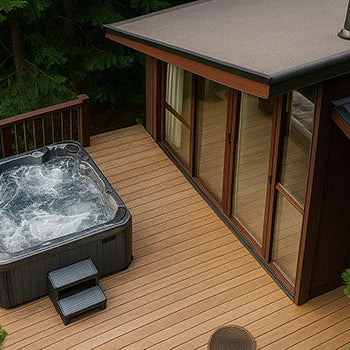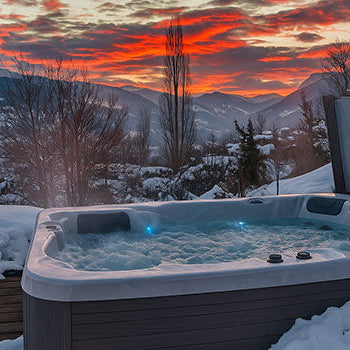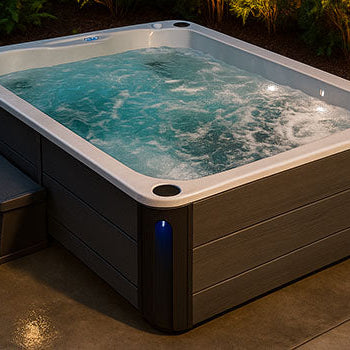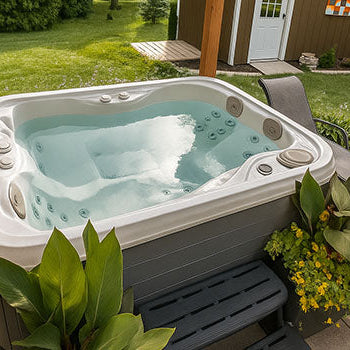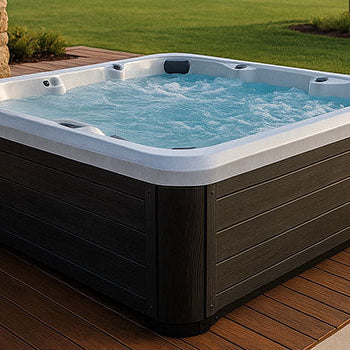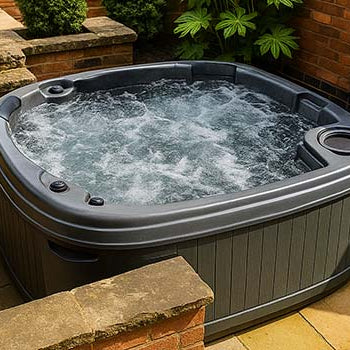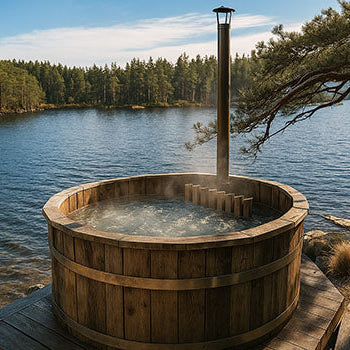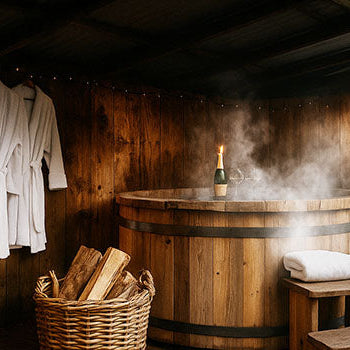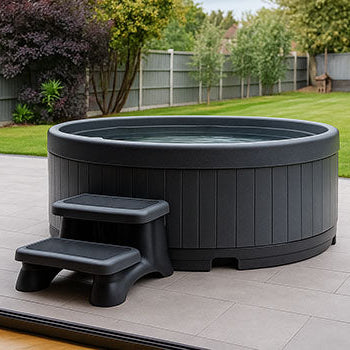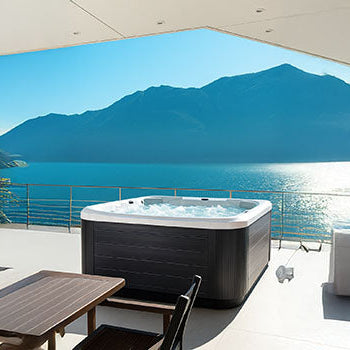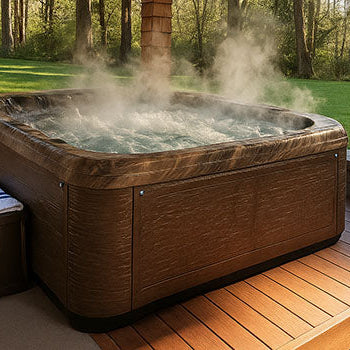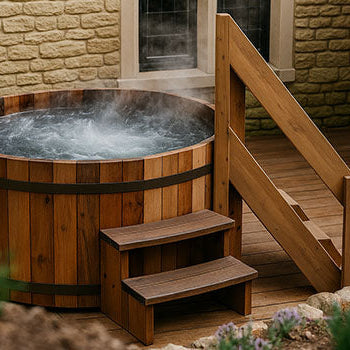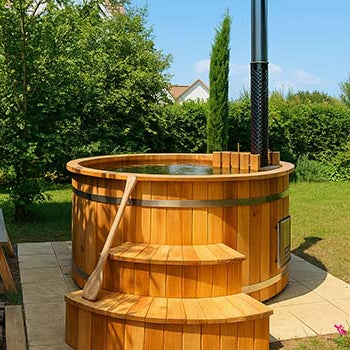Ever stepped into a hot tub and thought, "How does this thing work?" Here’s your short answer: Hot tubs move water through a system of pumps, plumbing, heaters, and filters to create that signature warm, bubbling soak. From sleek acrylic models to hardy rotomoulded tubs or rustic wooden ones, each hides clever technology under the surface. But what’s going on behind the bubbles? Let’s peel back the cover and find out.

The Core Components of a Hot Tub System
The Shell: Holding It All Together
The shell is your seat, soak zone, and splash zone. Built to withstand tough materials like acrylic, rotomoulded plastic, or timber, it supports the entire system and houses the jets, lights, and plumbing. It’s designed to last through heat, water, and weekend parties.
The Plumbing System: Water's Pathway
This is the hidden highway beneath your soak. Pipes carry water to and from the pumps, filters, jets, and heater. It’s all neatly tucked behind the shell, working silently to keep the spa running like a dream.
Pumps: The Heart of the Hot Tub (Circulation and Jet Pumps)
Circulation pumps keep water moving through filters nonstop, while jet pumps send it blasting through the jets for that bubbly massage. Without pumps, your hot tub’s just a cold, still puddle.
The Heater: Bringing the Warmth
The heater warms water as it flows through. Most hot tubs use electric heaters that heat quickly and accurately. Some models even reuse pump heat, making your soak both cosy and energy-smart.
Jets: Delivering the Hydrotherapy Massage
This is where it gets fun. Jets mix air and water, then shoot it out at pressure to give you that relaxing, targeted massage. They come in all shapes and styles, from gentle swirlers to muscle-kneading power jets.
Filtration System: Keeping Water Clean
Your tub’s mini cleaning crew. Filters trap dirt, debris, and oils. Combine that with skimmers and chemical treatment, and your water stays fresh, clear, and inviting.
Control Panel (Spa Pack): The Brains of the Operation
A hot tub’s command centre. It controls jets, lights, heating, and filtration from a single screen or panel. Some even have Wi-Fi, so you can set the mood from your phone.
Insulation: Maintaining Heat Efficiency
Insulation keeps heat in and energy bills down. High-end tubs use foam or thermal barrier layers to make sure your hot tub stays hot, even in chilly weather.
The Cover: Protection and Heat Retention
Your tub’s shield. It keeps leaves out, traps warmth in, and adds a safety layer. A good, lockable cover can save you money and hassle.
The Journey of Water: Circulation and Filtration Cycle
How Water Moves Through the System
Water begins at the surface, flows through skimmers and filters, gets heated, and then returns through the jets. It’s a constant loop: clean, warm, and ready.
The Role of Skimmers and Filters
Skimmers grab the floaty bits, like leaves or hair. Filters catch the smaller stuff. Together, they keep your water looking crystal-clear and feeling fresh.
Why Circulation is Key
Stagnant water is bad news. Constant circulation spreads heat evenly, distributes sanitisers, and keeps the whole system clean and running smoothly.

Heating the Water: How Your Hot Tub Stays Warm
Electric Heater Elements Explained
Inside the heater is a metal element, like a kettle. Water flows past it and picks up heat fast. Simple, smart, and safe.
Thermostats and Temperature Regulation
Thermostats monitor the temperature and adjust the heater as needed. If it gets too warm, it shuts off. Too cool? Back on. It’s like cruise control for your comfort.
Heat Recovery Systems (Optional)
Some tubs go greener by reclaiming heat from the pump motor. It’s energy-efficient and reduces running costs, win-win.
The Power of Jets: How Hydrotherapy Works
Mixing Air and Water for Massage
Jets blend air with water for pressure. That bubbly stream? It’s doing more than tickling, it’s relaxing muscles and boosting circulation.
Different Types of Jets and Their Effects
There’s a jet for every mood. Spinners, pulsators, and directional types each create different massage sensations, from soothing to intense.
Adjusting Jet Pressure and Flow
Many hot tubs let you customise jet power. Want a stronger massage? Turn it up. Prefer a soft bubble? Dial it down. You’re in control.
Keeping it Clean: Sanitation Systems
Traditional Sanitisers (Chlorine/Bromine)
These are your chemical cleaners. Added in small amounts, they kill bacteria and keep the water safe for soaking.
Ozone Generators: How They Assist Sanitation
Ozone systems break down contaminants using active oxygen. They help cut back on chemical use and improve water clarity.
UV Sterilisation Systems (Optional)
UV systems zap germs with light. No chemicals, just tech doing the heavy lifting to keep your water clean.
Putting It All Together: A Typical Hot Tub Usage Cycle
Here’s how it flows: You fill the tub. Set your temp. The system heats, filters, and circulates the water. You hop in, enjoy the jets, then cover it after. The cycle keeps going, even when you’re not soaking.

Conclusion: Understanding Your Hot Tub's Inner Workings
Beneath every relaxing soak is some serious tech. From Acrylic Hot Tubs with digital panels to Rotomoulded tubs built tough and Wooden hot tubs with old-school charm, they all run on clever systems. Knowing how it all works helps you take better care of it and enjoy it more.
Treat it right, and your hot tub becomes more than a luxury. It’s your retreat, your muscle-melter, your backyard haven. And now, you know exactly what’s going on behind the bubbles.
